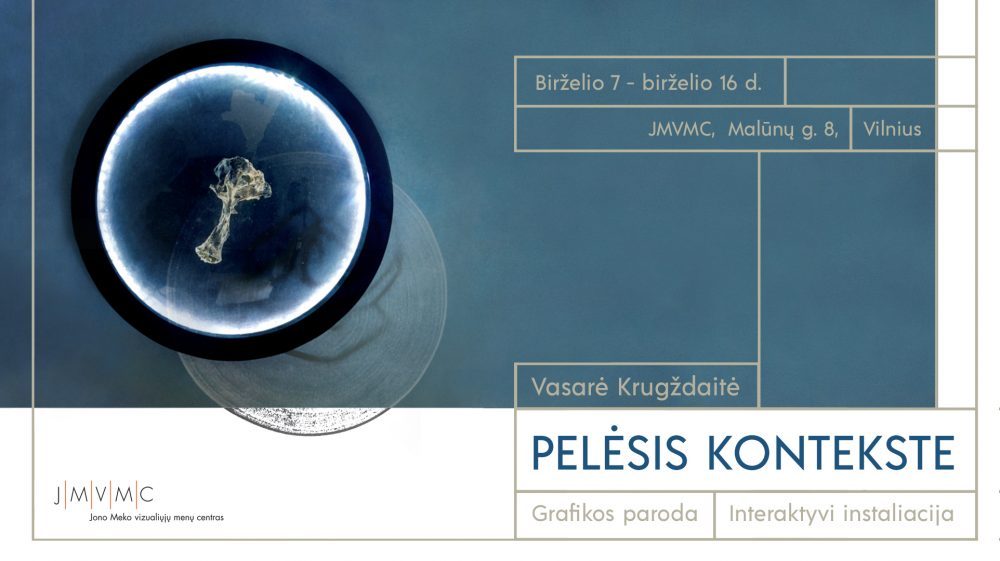2018 03 29. Aleksas Andriuškevičius: NEVER BEFORE SEEN
Aleksas Andriuškevičius’ NEVER BEFORE SEEN exhibition will open on March 29 at 18.00 at the Jonas Mekas Visual Arts Center, Malūnų g. 8, Vilnius.
Aleksas Andriuškevičius (b. 1959) lives and works in Kaunas. He was one of the foremost Lithuanian avantgardists from the the Sąjudis independence movement period (1988-1990) through the late 1990s. This juncture in time in Lithuania, just as in all of Eastern Europe, reflected a time for a (neo) avant-garde break in the visual arts.
Andriuškevičius made his debut in the middle of the 1980s as a unique representative of photorealistic painting. However, the next stage of his creative work was influenced by his friendship with Robertas Antinis, Česlovas Lukenskas and Gintaras Zinkevičius, who encouraged him to turn towards collective actionism and thus, the group Post Ars was esablished in 1990. Altogether, one can say that Andriuškevičius is one of the founders of Lithuanian conceptual art, video art and video performances.
Andriuškevičius was always interested in sound, text, movement, thought processes and similar structures and how to force them to function according to the principles of visual art and even more so according to the principles of (video) conceptualism. In his performative video creations, the mundane, the dimension of time, spatial “drawing”, action, its spread through time and space (also through the video medium) have always been important to Andriuškevičius. Also, the semantics of a paradox or a meaning that is created by the viewer.
The exhibition NEVER BEFORE SEEN presents works and series by the artist that were created from approximately 1989 through 1994 and gathered dust in his workshop for over 20 years, but for one reason or another never saw the light of day at a show and are unknown to Lithuanian audiences.
This mini-retrospective also reflects Andriuškevičius’ genesis from the flatness of two-dimensional painting to three-dimensional objects, from ensembles to conceptual experiments and processes – an aesthetic of the here and now or make it yourself that, through transformation, becomes an artistic activity or artefact, and extends to infinity.
Both in Andriuškevičius’ two-dimensional and three-dimensional works, you can feel the invasion of the everyday that is typical of all 20th Century Lithuanian contemporary art. His Two Dimensional Still Life discusses with Kazimir Malevich and various everyday things (non-spiritual) lie down on the two-dimensional space, objets trouvés – checks, receipts, newspaper clippings, charts, “needleworked grating boards”, books, pieces of rugs, etc. Graphic works made from printing stamps that had been discarded. Rolls of wrapping paper, where lines represent the periods of time between which the lines were drawn.
The show also includes ten never before seen video performances in the Fluxus spirit by Aleksas Andriuškevičius (from old VHS tapes to those that have been specially digitalized for this exhibition, in which reality, the everyday, the demystification of an artwork and action (and, looking at them through today’s perspective), remystification, conversion into a new language for that time period), may also play a major role.
The main feature of these actions is “meager” minimalism because, at the time, efforts were focused on making an idea pure and actions real and that’s why decorative elements weren’t necessary. And that’s why that art is so real. Secondly, after the passage of twenty years, you can see the imprint of another time period that has become a part of history and is nostalgic.
Artist’s Solo with Paper 1990s
Four Lie Downs 1990s
One Kilogram of Sugar, 1991
Washing a Sculpture 1990s
Drawings 1990s
Warmth of a Lens (Land Warmed by a Lens, A Piece of Wall Warmed by a Lens, A Person Warmed by a Lens).
Educational Film 1990s
Two Part Concert “Standing”, Parts I, II, 1990s
Moving in Place, 1990s
A Cultural Walk, 1990s
Demarcation Line, 1990s
Concert I, Concert II, Concert III, 1990s
A Long Time Ago…, 1988
ARTNOTART, 1990s
Camera Operator: Ričardas Rickevičius
A Long Time Ago…, 1988
Dependence, 1989
Worn Down, 1989
Varnished Polygraphic Resources (No. 5, 6, ?, 8, 9, 11), cardboard, polygraphy, varnish, 1990
Spring, 1989
Leftovers, 1990
Tête–à–tête
Solitary Cell, 1991
Unnamed
Manuscripts, 1992
Still Lifes (two planes), 1988
Time Gone By, 1994







Leave a Reply